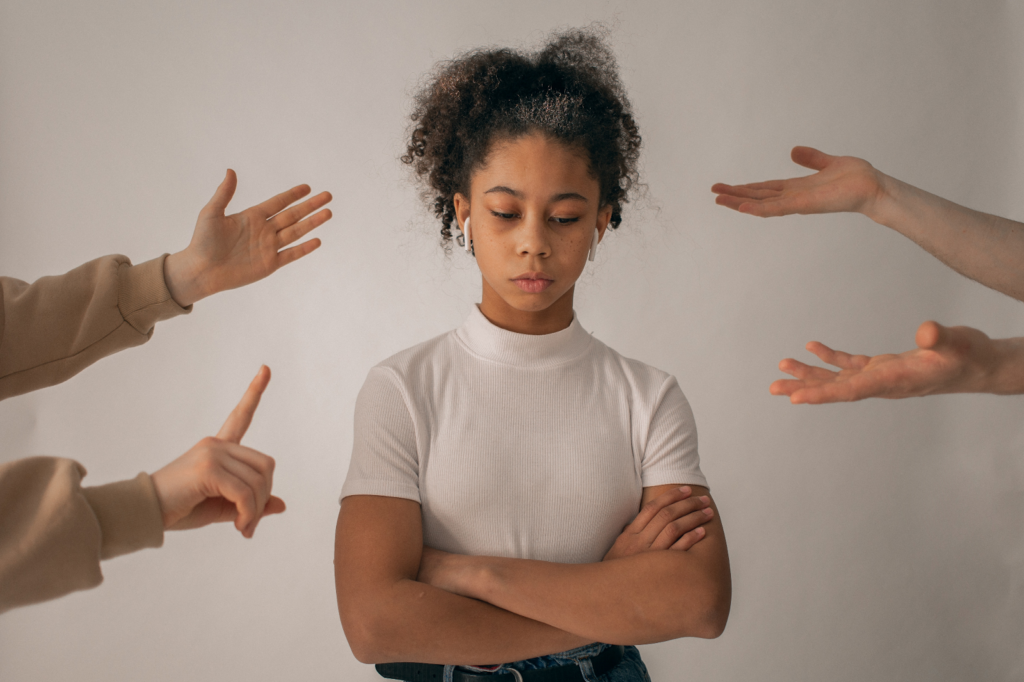‘Love Mood’: One of the trending Snapchat filters in 2023. Its description reads ‘this Snapchat filter removes acne and adds a subtle glow to your face’. It is considered to be one of the best filters that can be used to impress someone.
A promise that not even my dermatologist can make.
While one may crack a joke or two about filters such as these and move on, there is an unbelievable proportion of users out there who will cling to this assurance. Especially teenagers.
Things will go from bad to worse and eventually looking exactly like you do on Snapchat will become an obsession. One that will attack your mental health, exacerbate your insecurities and drag you down into an abyss. You may think a statement as such is hyperbolic, but it is an understatement. Because the current situation is much more dangerous than what has been described here.
2020 was the year when COVID-19 made its presence widely felt the world over. However, this was also when I stumbled across a Netflix documentary titled “The Social Dilemma”. It was about the detriments of social media and how they were governing our lives. One piece of information that refused to leave my memory was a condition called ‘Snapchat Dysmorphia’ (a term that was coined by plastic surgeon Dr. Tijon Esh. It describes an obsession with perceived flaws in one’s face or body that is fuelled by the need to look exactly like the idealised image of oneself created by the use of selfie filters). A jarring disease that not only spreads at an unthinkable speed but also results in the decay of the mental health of teenagers.
Fast forward a few years and now we are dealing with upgraded versions of it. Ones that have a direct impact on how teens perceive their bodies. The situation is dire and calls for attention.
An individual’s identity is in constant flux. Of course, the fluidity of identity is explained even via theoretical approaches. However, between you and me, what we know is that every phase of life demands a new identity, either one that you conjure or one that is conjured for you. One of the most fragile phases in the process of coming of age is adolescence or teen years. Especially because it is a time when they attach their identity to how they look, physically. Therefore, during that time, individuals absorb everything like a sponge. The ‘good and the bad’. Social media falls under the ‘bad’. Mainly because it preys on existing insecurities.

The “ideal” body
The constant exposure to depictions of idealised bodies in the media adds to the complexities of adolescence. It is hardly surprising that a significant number of teenagers grapple with their body image. While standing at a height of 5ft. 8 inches is not necessarily considered short for a young man, most content on social media predominantly features guys who are 6 feet tall or taller. Similarly, this trend extends to young women, where the media portrays them with flawless hourglass figures. This can cause body dysmorphia.
Ever wondered why some of us are so drawn to figures of ‘idols’ who have zero waist or abs that look like they are photoshopped? And constantly mutters the phrase ‘I wish I had that body’. This is because people with dysmorphia see their own bodies as inaccurate or below a certain standard.
For instance, individuals might perceive themselves as overweight even when they are not. Social media has the potential to exacerbate body dysmorphia through two primary mechanisms.
Firstly, continuous exposure to individuals showcasing seemingly flawless bodies on social media can contribute to the development of this condition in those who are predisposed to it.
Secondly, for those already grappling with body dysmorphia, social media can serve as a trigger. Someone afflicted with body dysmorphia may dedicate long periods of time to scrolling through images of slender celebrities on social platforms. This prolonged comparison has the potential to foster feelings of ‘I am not enough” and low self-esteem.
And in trying to gain a perfect body, become a victim of eating disorders.
Unfortunately, most social media sites go from “5 healthy ways to lose weight” to “check out this diet pill that makes you shed kilos”, overnight. The shift from the first suggestion to the next can cause altered behaviours such as bulimia and anorexia.
Bulimia nervosa emerges when individuals occasionally consume a significant quantity of food and then resort to unhealthy methods to eliminate the excess calories. This usually includes vomiting, engaging in excessive exercise, using laxatives or drastically reducing the food intake due to remorse stemming from binge-eating.
Anorexia nervosa develops when people drastically limit their eating because they are scared of getting heavier. This can lead to excessive loss of weight and serious health concerns.
For those who are already recovering or are seeking help to overcome such disorders, social media clickbait titles as such could be a trigger that sends them into a relapse.
Evidently, social media is not just harmful to teenagers but can act as a gateway to mental illnesses.
Is social media the only culprit?
Yes and no.
Research done by experts far and wide has varying opinions. Some, while acknowledging the fact that there is a very clear link between the use of social media and the emergence of body image concerns in young individuals, are also of the belief that it is not solely social media but rather a “self-perpetuating cycle of risk” (pre-existing worries about how one’s body looks could increase the chances of individuals being vulnerable to social media’s negative influence on the body image) that may be the underlying factor.
If the answer to the question of whether social media is the sole criminal lies in a liminal space between a yes and a no, then what teenagers and their parents should do is monitor what they follow and unfollow. Dr. Satish Kumar CR, Consultant, Clinical Psychology, Manipal Hospitals in an article published in ‘The Indian Express’ says that cutting screen time by at least 50% can restore a teen’s body image “because you have more time for interpersonal relationships that give you a much better sense of self-worth”.
The other side of this conversation is about how social media is also used as a platform that advocates for body positivity. It shares and celebrates diverse body types in abundance. However, the pull that social networking sites that capitalise on narrow and impractical beauty standards have on most teenagers seems to overpower the positive side of it. Researchers say that as much as this is psychological it is also societal conditions that cause body dissatisfaction to influence people so much faster than body satisfaction.
But taking baby steps to fight the urge to cave into sentiments of body dissatisfaction can always be a good place to start. If you use that Snapchat filter thinking “just one more like, just one more heart reaction”, don’t. Shield yourself from such thoughts. It may be hard, but it does not hurt to try.
(Sandunlekha Ekanayake)
